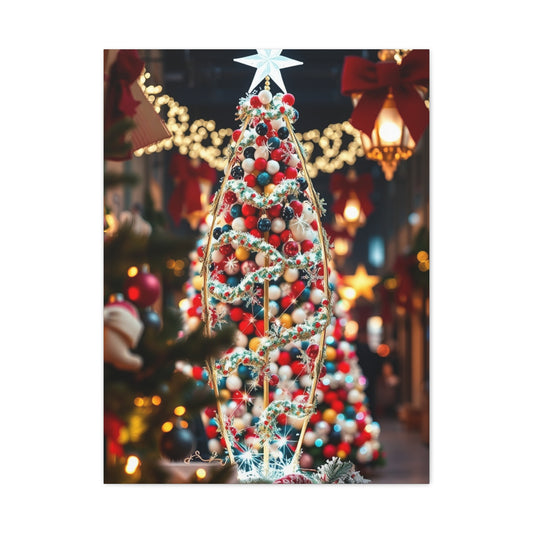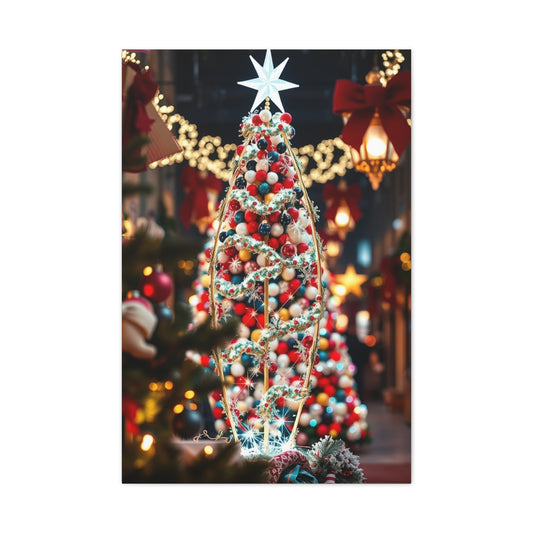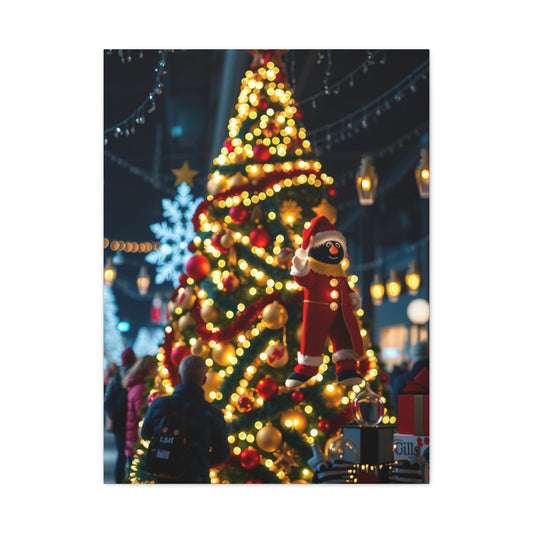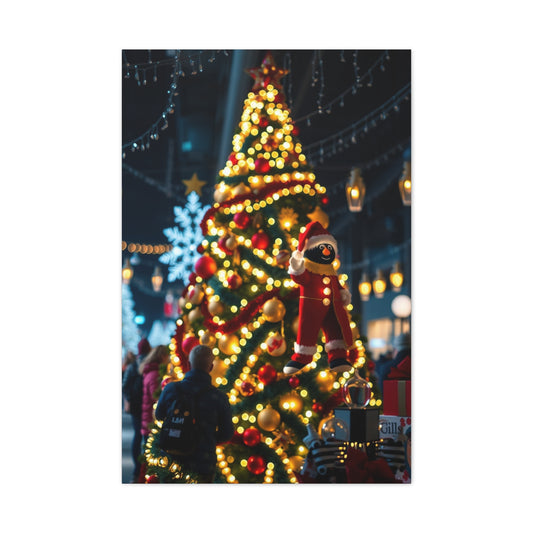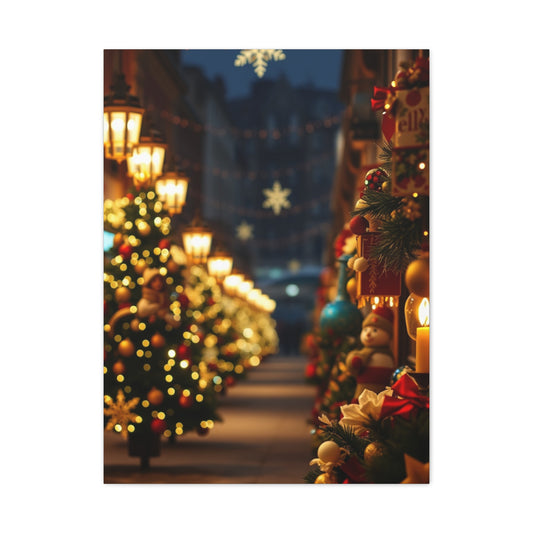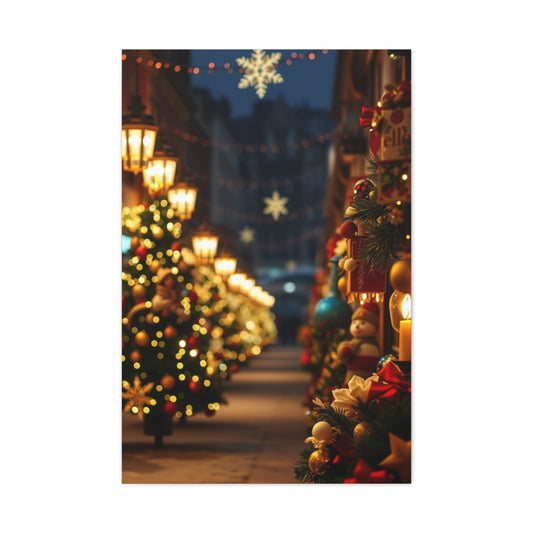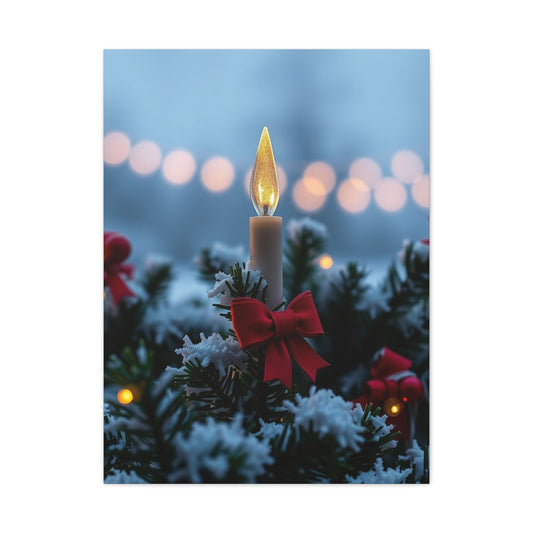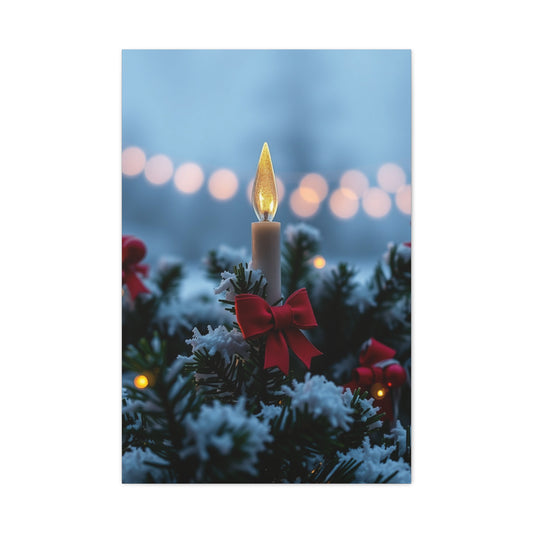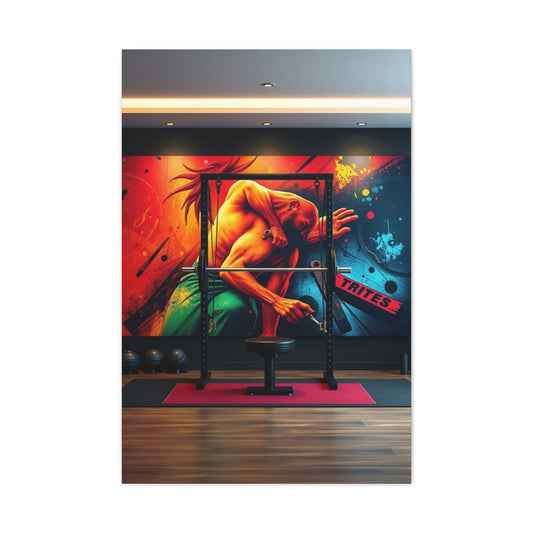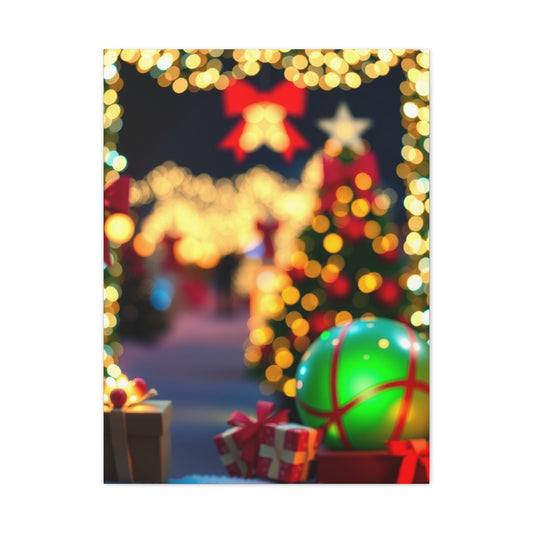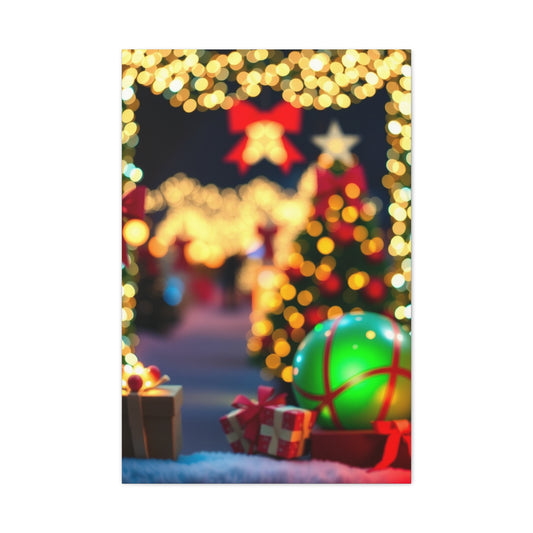Fashion photography is one of the most dynamic and visually captivating genres of photography, blending artistic creativity with commercial intent. Unlike portrait, landscape, or street photography, fashion photography is specifically focused on showcasing clothing, accessories, and sometimes makeup, emphasizing their design, texture, and appeal. The genre requires photographers to possess a combination of technical skill, a keen aesthetic sense, and an understanding of the fashion industry. At its core, fashion photography is about creating images that not only display products but also communicate a mood, narrative, or lifestyle that resonates with viewers and potential consumers.
One of the first steps to building a successful career in fashion photography is to understand its sub-genres and the specific demands of each. Editorial fashion photography is often featured in magazines and focuses on telling a visual story that aligns with a publication’s identity. These shoots are typically conceptual, using elaborate sets, props, and styling to create a narrative. Editorial photography allows for a high degree of creativity, pushing the boundaries of visual storytelling and blending fashion with art. It often involves a significant degree of collaboration, with photographers working alongside designers, stylists, makeup artists, and models to produce cohesive and visually compelling imagery.
High fashion photography is another sub-genre that emphasizes luxury and avant-garde designs. These shoots often feature exclusive clothing, designer labels, and high-end accessories. The primary goal is to highlight the artistry and craftsmanship behind the clothing, often creating dramatic and visually striking images. High fashion photography can appear in magazines, advertisements, and fashion campaigns, and it frequently uses creative lighting, dramatic poses, and unique locations to produce imagery that stands out. This sub-genre demands a strong understanding of fashion trends, attention to detail, and the ability to create visually arresting compositions.
Catalogue fashion photography, in contrast, prioritizes clarity and functionality. This type of photography is commonly used for online stores, printed catalogs, or e-commerce platforms. Catalogue photography focuses on accurately displaying the product, ensuring that color, texture, and fit are clearly visible. The aim is less about storytelling or artistic flair and more about providing potential buyers with a true representation of the product. Photographers working in this sub-genre must have a strong grasp of lighting, color accuracy, and composition to ensure that every item is presented in the best possible way.
Street style photography has gained popularity in recent years, capturing real-world fashion trends in everyday environments. Unlike studio or controlled settings, street style photography emphasizes candidness and authenticity. Photographers often capture individuals on the street, highlighting how clothing and accessories are worn naturally in urban or social settings. This style blends documentary photography with fashion, creating images that reflect contemporary trends and personal style. Street style photography requires an understanding of timing, composition, and environmental factors, as the photographer must adapt quickly to changing light and surroundings.
To excel in fashion photography, adaptability is crucial. Photographers must be able to navigate both controlled studio settings and dynamic outdoor environments. In a studio, photographers have the advantage of controlling every aspect of the environment, from lighting to background and props. Here, technical skills in lighting setups, modifier use, and camera settings are paramount. Outdoor or on-location shoots present a different challenge. Photographers must account for natural light, weather conditions, and environmental variables that can influence the shoot. Understanding how to manipulate light, manage shadows, and balance the subject with the background is essential for creating visually compelling outdoor fashion images.
Collaboration is another core component of fashion photography. Unlike solo projects such as landscape or product photography, fashion photography involves multiple professionals working together to achieve a unified vision. Models bring life to the clothing, stylists ensure that outfits and accessories are arranged for maximum visual impact, and makeup artists enhance the subject’s features while complementing the overall aesthetic. Effective communication and collaboration between the photographer and the team are vital. Being able to articulate your vision clearly while remaining open to input from other creative professionals often results in more dynamic and successful shoots.
Fashion photography is inherently tied to visual storytelling. Each image can convey a narrative, mood, or concept that goes beyond the clothing itself. For example, a high-fashion editorial might tell a story of glamour, rebellion, or fantasy, while a street style shoot might communicate confidence, individuality, or trend awareness. This storytelling aspect requires photographers to think beyond technical execution, considering how composition, lighting, location, and posing contribute to the narrative. Successful fashion photographers combine aesthetic sensibilities with storytelling abilities to create images that engage viewers and evoke emotion.
Lighting is one of the most critical elements in fashion photography. It shapes how the clothing and accessories appear, enhances textures, and creates depth within the image. Understanding the properties of light—its direction, quality, intensity, and color temperature—is fundamental. Natural light can provide soft, flattering illumination, but requires careful planning to account for changes in weather and time of day. Artificial lighting offers more control, allowing photographers to shape light using modifiers such as softboxes, beauty dishes, and reflectors. Mastery of lighting techniques enables photographers to highlight fabric textures, enhance colors, and create mood, whether the goal is a soft and ethereal portrait or a bold, dramatic editorial.
Composition plays an equally significant role in fashion photography. Beyond the rule of thirds, fashion photographers must consider the interplay between the model, clothing, and background. Lines, shapes, symmetry, and color contrast all influence how the viewer perceives the image. Experimenting with angles, perspectives, and framing can add interest and dimension to fashion shots. Close-ups may emphasize intricate details such as embroidery or accessories, while wide shots can showcase full outfits and contextualize them within an environment. A strong understanding of composition ensures that every element in the frame contributes to the overall aesthetic and storytelling goals.
Technical expertise is critical for achieving professional results in fashion photography. Cameras, lenses, and lighting equipment are foundational tools, but knowing how to leverage them effectively is equally important. Prime lenses, like 50mm or 85mm, are ideal for portraits due to their sharpness and ability to create pleasing background blur. Zoom lenses, such as 24-70mm or 70-200mm, offer versatility, allowing photographers to adjust framing without changing lenses. Full-frame cameras are preferred for their dynamic range, low-light performance, and depth of field control, all of which are essential in high-quality fashion work.
Post-processing and retouching are also essential components of fashion photography. Editing allows photographers to fine-tune exposure, contrast, and color balance while retouching skin, clothing, and backgrounds to achieve a polished final image. The goal is to enhance the visual appeal without compromising authenticity. Techniques like dodging and burning, selective color correction, and sharpening can elevate the image while maintaining the natural texture and details of the clothing and the model’s features. A strong command of post-processing software ensures that photographers can bring their creative vision to life consistently across different shoots.
Building a portfolio is crucial for establishing a career in fashion photography. A well-curated portfolio showcases versatility, technical skill, and unique style. It should include a variety of images, from full-body shots to close-ups, highlighting different clothing types, styles, and settings. Quality outweighs quantity; each image must demonstrate the photographer’s ability to execute their vision effectively. An online portfolio is essential for reaching clients, while printed versions can serve as valuable tools during meetings and auditions. A strong portfolio communicates professionalism and helps photographers stand out in a competitive industry.
Marketing and networking are integral to success in fashion photography. Social media platforms such as Instagram and Pinterest provide opportunities to showcase work, engage with audiences, and connect with potential clients. Collaborating with models, stylists, and brands increases visibility and credibility. Attending fashion events, exhibitions, and industry meetups allows photographers to build relationships with professionals who can provide referrals or future projects. Developing a strong personal brand and maintaining a consistent online presence enhances recognition and helps establish a sustainable career.
Continuous learning and staying inspired are essential for growth in fashion photography. The industry evolves rapidly, with new trends, techniques, and technologies emerging constantly. Analyzing the work of established photographers provides insight into composition, lighting, and storytelling approaches. Participating in workshops, courses, and mentorship programs accelerates skill development and exposes photographers to new perspectives. Experimenting with personal projects allows for creative exploration, helping photographers develop a unique style that differentiates them in a crowded market.
Overcoming challenges is an inherent part of pursuing a career in fashion photography. Budget limitations, tight schedules, demanding clients, and creative blocks can test a photographer’s resilience. Developing strong organizational skills, maintaining a professional work ethic, and cultivating a supportive network of peers helps navigate these challenges. Balancing commercial demands with creative expression is a skill that grows with experience, allowing photographers to maintain artistic integrity while meeting client expectations.
Studying the work of influential fashion photographers provides inspiration and guidance. Icons such as Tim Walker, Annie Leibovitz, and Steven Meisel demonstrate different approaches to fashion photography—from fantastical editorial narratives to powerful portrait-driven campaigns. Understanding their techniques, compositional choices, and storytelling methods can inform a photographer’s own style and approach. Learning from established professionals emphasizes the importance of creativity, technical mastery, and innovation in achieving recognition and success in fashion photography.
Fashion photography is a multifaceted field that demands creativity, technical expertise, and an understanding of the fashion industry. By mastering lighting, composition, and collaboration, photographers can create compelling images that elevate fashion and engage audiences. A well-curated portfolio, strong marketing strategies, and continual learning are essential for building a sustainable career. Aspiring fashion photographers must combine passion with diligence, creativity with technical skill, and adaptability with vision to thrive in this competitive and ever-evolving industry.
Understanding the foundations of fashion photography, its sub-genres, and its practical requirements is the first step toward a successful career. Mastery comes from practice, observation, and a commitment to continuous improvement. Fashion photography offers immense opportunities for creative expression, storytelling, and professional growth, rewarding those who dedicate themselves to refining their craft and embracing the collaborative, dynamic nature of the field.
Essential Equipment and Tools for Fashion Photography
Fashion photography demands more than creativity; it requires the right equipment to bring visions to life. Choosing the correct camera, lenses, and lighting gear is crucial, as these tools directly affect image quality, flexibility, and the ability to capture fashion most compellingly. While the artistic eye is vital, technical preparation ensures that a photographer can execute their ideas consistently and professionally across a variety of settings.
Cameras are the cornerstone of any fashion photography setup. Full-frame DSLRs or mirrorless cameras are generally preferred due to their superior image quality, wide dynamic range, and ability to perform well in various lighting conditions. Full-frame sensors offer more depth of field control, allowing photographers to isolate subjects from backgrounds effectively. Mirrorless cameras have the added advantage of electronic viewfinders, faster autofocus, and lighter body designs, which can be particularly helpful during long shoots or when mobility is essential. Regardless of the camera chosen, understanding its settings, features, and limitations is critical for achieving consistent, professional results.
Lenses are equally vital in fashion photography. Prime lenses, such as 50mm, 85mm, and 135mm, are often used for portrait-style shots. Their wide apertures allow for shallow depth of field, creating a soft background blur that isolates the model and emphasizes clothing details. Prime lenses are valued for their sharpness, low-light performance, and ability to produce high-quality bokeh. Zoom lenses, such as 24-70mm or 70-200mm, offer versatility, allowing photographers to adjust composition quickly without changing lenses. These lenses are especially useful in dynamic environments, such as runway shows or outdoor street style shoots, where repositioning may be limited. Understanding lens characteristics, including focal length, aperture, and distortion, helps photographers choose the right tool for each creative scenario.
Lighting is another critical component of fashion photography. Proper lighting enhances textures, colors, and shapes, giving clothing and accessories their visual impact. Studio lighting offers full control over illumination, with tools such as softboxes, beauty dishes, reflectors, and strobes allowing precise shaping of light. Softboxes create soft, even light, ideal for portrait and close-up fashion shots. Beauty dishes produce a focused, slightly harder light, accentuating details and contours. Reflectors are essential for bouncing light into shadow areas, providing fill, and adding dimension to the subject. A strong understanding of lighting techniques, including direction, quality, and intensity, is indispensable for producing professional fashion imagery.
Natural light is also a valuable resource in fashion photography, particularly for outdoor and lifestyle shoots. Photographers must learn to use sunlight creatively, considering the angle, intensity, and color of the light at different times of day. Golden hour, the period just after sunrise or before sunset, provides warm, soft lighting that is flattering to both models and garments. Midday sun, while harsh, can be managed using diffusers or reflectors to control shadows and highlights. Combining natural and artificial light creatively allows photographers to achieve unique looks and maintain consistency across various shooting environments.
Tripods and stabilizing equipment are important tools, especially for studio or product-focused fashion shoots. Tripods help maintain consistent framing, prevent camera shake, and facilitate precise adjustments to composition. They are also useful for long-exposure fashion photography, HDR techniques, or when using heavy telephoto lenses that require stability. Gimbals or monopods may be used in dynamic or location-based shoots to provide mobility while still offering some stabilization. Selecting the right support equipment ensures that photographers can work efficiently and capture images without compromising quality.
Accessories such as lens hoods, filters, and memory cards enhance both the protection and functionality of photography equipment. Lens hoods prevent lens flare and add a layer of physical protection, while polarizing or neutral density filters allow creative control over reflections, contrast, and exposure. High-capacity, fast memory cards are essential for shooting in RAW format, capturing high-resolution images, and ensuring smooth workflow during shoots. These seemingly small items can make a significant difference in both image quality and operational efficiency.
Post-processing tools are an essential extension of the photographer’s toolkit. Software like Adobe Lightroom and Photoshop allows for precise adjustments to exposure, color balance, and contrast. Retouching techniques, such as blemish removal, skin smoothing, and color grading, are commonly used in fashion photography to create polished, professional images. Dodging and burning techniques can enhance depth and dimension, emphasizing clothing details and facial features. Mastering post-processing is crucial for producing consistent, high-quality results and translating the creative vision from the shoot into a final image that meets professional standards.
In addition to technical tools, photographers must consider practical items that facilitate a smooth shoot. Reflective boards, clamps, backdrop stands, and portable props can help create dynamic compositions and control environmental factors. Clothing racks, garment bags, and organizational tools keep outfits and accessories accessible and in pristine condition during longer sessions. While often overlooked, these details contribute to a professional workflow, reducing delays and minimizing the risk of damage to garments or equipment.
For fashion photographers working on location, mobility and portability become important considerations. Lightweight camera bodies, compact lighting solutions, and versatile lenses allow photographers to move quickly between setups without sacrificing quality. Understanding how to adapt equipment choices to different environments is essential for producing professional results in both studio and outdoor scenarios.
Investing in quality equipment is important, but knowing how to use it effectively is equally critical. Technical knowledge alone cannot replace creative vision, and understanding the interaction between camera settings, lens selection, and lighting is fundamental for achieving desired outcomes. Photographers must continually experiment with different setups, analyze results, and refine their techniques to maximize the potential of their tools.
The right combination of cameras, lenses, lighting, and accessories forms the foundation of effective fashion photography. Mastery of these tools allows photographers to execute their creative vision consistently and professionally, regardless of the setting. Understanding the strengths and limitations of each piece of equipment, alongside technical proficiency and creative insight, enables photographers to produce images that highlight fashion effectively while capturing the essence of their subjects. Fashion photography demands preparation, adaptability, and continual learning, making equipment knowledge and selection an essential step for anyone seeking to excel in this visually demanding field.
By mastering both the technical and creative aspects of their tools, fashion photographers can focus on storytelling, composition, and collaboration, ensuring that every shot is polished, visually compelling, and aligned with their creative objectives. This foundation paves the way for effective planning, execution, and post-production in subsequent stages of fashion photography.
Planning and Conceptualizing Your Fashion Shoot
Successful fashion photography begins long before the camera is turned on. Planning and conceptualizing a shoot are critical steps that lay the groundwork for capturing images that are both visually compelling and aligned with the creative vision. Thoughtful preparation ensures that every element—location, wardrobe, lighting, model selection, and props—works together cohesively, resulting in a professional, polished final product. Understanding the planning process is essential for both aspiring and experienced fashion photographers looking to consistently produce high-quality imagery.
The first stage of planning involves defining the concept or theme of the shoot. A concept acts as the blueprint for every decision made during the project. Whether the goal is to produce an editorial, high fashion, catalogue, or street style shoot, having a clear idea of the mood, story, or message you want to convey is essential. Conceptualization may involve brainstorming sessions, sketching ideas, or creating mood boards. Mood boards are particularly valuable because they visually compile inspiration from magazines, social media, and other photography work, providing a reference point for styling, color palettes, lighting, and composition. This preparation ensures that everyone involved in the shoot understands the creative direction and contributes effectively to the outcome.
Location scouting is the next critical step. The choice of location impacts lighting, background, mood, and logistics. Outdoor locations offer natural light and dynamic environments, but they require careful planning around the time of day, weather conditions, and accessibility. Golden hour and overcast skies can dramatically change the mood of a photograph, so understanding how natural light interacts with the environment is crucial. Urban environments provide textures, architecture, and cultural context, while natural landscapes offer organic elements that can complement fashion storytelling. Indoor or studio locations, in contrast, allow photographers to have complete control over lighting and background. Here, considerations include space, backdrop options, lighting setups, and power sources. Proper scouting and preparation prevent disruptions and ensure that the shoot proceeds smoothly.
Wardrobe and styling are central to fashion photography and should align with the shoot’s concept. Fashion stylists play a pivotal role in selecting clothing, accessories, and coordinating outfits to achieve a cohesive aesthetic. Photographers must collaborate closely with stylists, communicating their vision and allowing input to ensure that clothing choices complement the model, setting, and lighting. Wardrobe preparation also includes organizing outfits, checking for wrinkles, sizing issues, and ensuring all garments are clean and ready for use. Attention to detail at this stage prevents delays during the shoot and contributes to the overall professionalism of the project.
Model selection is another key element in planning a fashion shoot. The model’s look, experience, and ability to convey emotion or movement are essential for bringing the concept to life. Consideration should be given to how the model’s features and expressions will interact with the clothing and overall aesthetic. Communication and rapport are critical; establishing trust and a comfortable working environment allows models to perform confidently, producing more authentic and dynamic images. Understanding the model’s strengths and limitations enables the photographer to direct poses effectively and create compositions that highlight both the individual and the fashion items.
Props and background elements further enhance the visual narrative. From simple chairs or walls to elaborate set pieces, props can add depth, context, and interest to fashion images. The choice of props should complement the concept without overpowering the subject or clothing. Similarly, background elements—whether natural, urban, or studio—should be carefully selected to enhance the overall composition and mood. Balancing these elements requires an eye for detail and a clear understanding of how each component contributes to the visual story.
Lighting planning is a critical aspect of conceptualization. Effective lighting enhances textures, shapes, and colors while setting the mood for the shoot. In studio environments, photographers can experiment with softboxes, beauty dishes, grids, and reflectors to shape light and control shadows. For outdoor shoots, understanding the movement and quality of natural light allows photographers to plan for optimal shooting windows. Anticipating lighting conditions ensures that images are consistent and that creative vision is maintained across different shots and setups. Experimenting with lighting angles, diffusion, and intensity in advance minimizes on-set adjustments and maximizes efficiency.
Scheduling and logistics are vital components of pre-shoot planning. Coordinating the availability of models, stylists, makeup artists, assistants, and locations requires careful organization. Creating a detailed schedule ensures that each segment of the shoot runs smoothly and that no critical elements are overlooked. This includes planning for breaks, wardrobe changes, lighting adjustments, and contingency plans in case of unforeseen circumstances. Efficient scheduling reduces stress on set, allowing the photographer and team to focus on creativity and execution.
Storyboarding can be an effective tool for complex shoots. A storyboard outlines specific shots, angles, poses, and sequences, providing a visual guide that helps the team stay aligned with the concept. Storyboards are particularly useful for editorial or high-fashion shoots, where multiple looks, locations, or setups are involved. They ensure that nothing is missed and that the photographer captures every essential image required for the final project. By visualizing each shot in advance, the photographer can anticipate challenges, adjust compositions, and plan lighting more effectively.
Communication with the entire team is crucial throughout the planning process. Clear articulation of the concept, mood, and desired outcomes ensures that models, stylists, makeup artists, and assistants understand their roles and contributions. Collaborative discussions often lead to innovative ideas, alternative approaches, and creative solutions that enhance the shoot. A well-prepared, informed team is more confident, efficient, and aligned, resulting in higher-quality images and a smoother workflow.
Budgeting is another critical consideration during planning. Fashion shoots can involve significant costs, including location fees, wardrobe, props, lighting equipment, and personnel. Establishing a realistic budget and allocating resources effectively allows photographers to prioritize essential elements without compromising the shoot’s quality. Budgeting also encourages creative problem-solving, such as finding alternative locations, using versatile props, or leveraging natural light to reduce costs while maintaining professional standards.
Risk management should be integrated into planning. Fashion shoots often involve expensive clothing, valuable equipment, and complex setups. Identifying potential risks, such as equipment damage, wardrobe malfunctions, or weather disruptions, and developing contingency plans ensures the shoot can proceed with minimal interruptions. This proactive approach protects both the creative vision and the resources invested in the project.
Finally, mindset and preparation are as important as technical considerations. Approaching the shoot with confidence, flexibility, and a problem-solving attitude allows the photographer to adapt to unexpected challenges. Fashion photography is inherently collaborative and dynamic, requiring the ability to think on one’s feet and make quick decisions while maintaining artistic integrity. Thorough planning instills confidence, allowing the photographer to focus on composition, lighting, and storytelling during the actual shoot.
Planning and conceptualizing a fashion shoot involves defining the creative vision, selecting locations, coordinating wardrobe, styling, and models, and planning lighting and props. Effective communication, scheduling, budgeting, and risk management are all integral to a successful execution. By investing time and effort into thorough pre-shoot preparation, photographers can ensure that every element aligns with the concept, resulting in cohesive, professional, and visually compelling fashion imagery. This foundation allows the photographer to focus on capturing striking, narrative-driven images that reflect both technical mastery and creative expression, setting the stage for the next phases of the fashion photography process.
Working with Models and Stylists in Fashion Photography
Collaboration lies at the heart of fashion photography. Unlike other forms of photography where the subject may be static or inanimate, fashion photography involves working with living subjects—models—while also coordinating with stylists, makeup artists, and other creative professionals. Building strong relationships and clear communication with your team is essential to achieving a polished and cohesive final result. Understanding how to direct models, incorporate stylistic input, and foster a productive environment ensures that the creative vision is realized effectively.
The role of models in fashion photography extends far beyond simply wearing clothing. Models are storytellers, bringing life, movement, and emotion to the garments they showcase. A skilled fashion photographer understands the nuances of posing, expression, and body language, guiding models to convey the intended mood and narrative. Establishing rapport with models before and during the shoot is essential. Taking time to discuss the concept, show reference images, and understand their comfort level helps models perform naturally and confidently. A collaborative approach often leads to more authentic and dynamic images, as the model feels valued and invested in the creative process.
Effective communication is crucial when working with models. Clear, concise direction ensures that poses, angles, and expressions align with the creative vision. Demonstrating poses or using visual references can be helpful, particularly for models who are less experienced or unfamiliar with certain styling concepts. However, it is equally important to allow models to interpret direction and contribute their own creativity. This balance between guidance and freedom encourages spontaneity, resulting in images that feel organic rather than rigid or staged. Active listening and positive reinforcement on set also foster a comfortable environment, helping models maintain energy and engagement throughout the session.
Stylists play an equally important role in fashion photography. Their expertise in clothing, accessories, and overall visual cohesion ensures that each outfit is presented most compellingly. Collaborating closely with stylists allows photographers to understand the vision behind each look, how garments should be positioned, and how accessories should be incorporated. Effective communication with stylists includes discussing wardrobe selections, coordinating color palettes, and ensuring that clothing fits the model properly. Regular checks throughout the shoot help prevent wardrobe malfunctions and ensure that garments appear polished and intentional in every frame.
Hair and makeup artists are essential collaborators in fashion photography, shaping the model’s appearance to complement the overall concept. Photographers should communicate clearly about lighting conditions, mood, and the desired aesthetic so that hair and makeup are consistent with the visual direction. Observing and adjusting hair and makeup throughout the shoot ensures that details remain impeccable and that the final images are professional. Collaboration between photographer, stylist, and makeup artist is a continuous process, with each team member contributing to the success of the project.
Creating a comfortable and professional atmosphere on set is critical. Fashion shoots can be physically and emotionally demanding, with long hours, multiple outfit changes, and challenging poses. A positive environment encourages models and collaborators to perform at their best. Small considerations, such as providing seating, refreshments, and breaks, demonstrate professionalism and respect for the team. Maintaining a calm and organized workflow reduces stress and allows creativity to flourish. A supportive atmosphere often results in more expressive and dynamic images, as models and team members feel confident and valued.
Understanding posing is a key skill for fashion photographers. Poses should highlight the clothing, create flattering lines, and communicate the desired mood. Techniques include using angles, body positioning, hand placement, and facial expressions to enhance visual impact. Photographers should be familiar with a variety of poses that suit different body types, garments, and contexts. Encouraging movement, such as walking, turning, or interacting with props, can add dynamism and storytelling to images. Providing continuous feedback and subtle adjustments ensures that each pose appears natural while showcasing the fashion effectively.
Timing and sequencing are also important when directing models. Capturing fleeting expressions, gestures, or movements requires anticipation and quick reflexes. Photographers must be ready to adapt to the model’s natural rhythm while maintaining alignment with the creative concept. Continuous shooting or burst mode can help capture decisive moments that might otherwise be missed. By observing and guiding the model’s movements, photographers can create a series of images that feel cohesive, dynamic, and expressive.
Collaboration extends beyond the immediate team to include assistants and production staff. Assistants help manage equipment, lighting modifications, and wardrobe adjustments, allowing the photographer to focus on composition and direction. Efficient coordination among all team members ensures that the shoot runs smoothly and that creative goals are achieved without unnecessary delays. Clear roles and responsibilities, along with effective communication, help maintain professionalism and streamline the workflow.
Feedback and adaptability are essential during fashion shoots. Photographers should continuously assess the results on the camera’s display, adjusting poses, angles, and lighting as needed. Constructive feedback to models and collaborators should be specific, actionable, and delivered positively. Flexibility allows the team to respond to unexpected challenges, such as changes in lighting conditions, wardrobe issues, or model comfort. Adaptable photographers maintain creative momentum while ensuring that the final images meet high standards.
Collaboration also involves creative input from models and stylists. Encouraging them to contribute ideas or suggest variations can lead to innovative compositions and unexpected results. A collaborative mindset fosters mutual respect and ensures that everyone involved feels invested in the shoot. Recognizing and valuing each team member’s expertise contributes to a more cohesive and successful project.
In addition to creative collaboration, logistical coordination is critical. Organizing outfit changes, scheduling makeup touch-ups, and managing timing for outdoor lighting requires careful planning. Fashion photographers must anticipate potential delays and ensure that each segment of the shoot transitions smoothly. Detailed preparation allows the creative process to proceed uninterrupted, maximizing both efficiency and image quality.
Finally, professional conduct and communication extend beyond the shoot itself. Following up with team members, providing feedback, and expressing gratitude strengthen professional relationships. Networking with models, stylists, and makeup artists can lead to future collaborations and opportunities. Building a reputation for professionalism, creativity, and reliability establishes trust and credibility within the fashion photography community.
Working effectively with models and stylists is a cornerstone of successful fashion photography, as the collaboration between these key contributors brings creative concepts to life. Unlike other photographic genres, fashion photography is inherently collaborative, involving the interaction of multiple professionals whose combined expertise transforms an idea into a visually compelling image. A photographer’s technical skill with camera settings, composition, and lighting is essential, but without seamless teamwork, even the most carefully planned shoots may fail to achieve their full potential. Understanding how to work with models and stylists is, therefore, critical for creating striking, polished images that capture both the clothing and the story behind it.
Collaboration begins with clear communication. A photographer must articulate their vision to the team so that every member understands the creative goals and aesthetic priorities. This includes conveying the mood, style, and narrative of the shoot, as well as specific instructions on poses, lighting interactions, and wardrobe placement. Mood boards, reference images, and storyboards are effective tools for visually sharing ideas with models, stylists, and assistants. When team members understand the intended look and feel, they can contribute their expertise in ways that enhance the shoot rather than creating confusion or conflicting directions. Clear communication also fosters a professional environment where questions can be asked and suggestions considered, ultimately leading to stronger creative outcomes.
Working with models involves more than simply instructing them on poses. Effective direction requires sensitivity, confidence, and adaptability. Every model brings their own personality, energy, and movement style to the shoot, and the photographer’s role is to guide this natural expression in a way that highlights the clothing and concept. Providing clear guidance on posture, gestures, facial expressions, and eye contact ensures that the desired narrative is conveyed, while allowing models to inject their individuality, keeping the images authentic and engaging. Positive reinforcement is crucial; a model who feels confident and supported will perform better, resulting in more dynamic and expressive images.
Timing and pacing also play an important role when working with models. Fashion shoots can be physically demanding, particularly for longer sessions or when working with multiple outfit changes. Being mindful of breaks, managing energy levels, and maintaining an encouraging atmosphere help models remain focused and comfortable throughout the session. Adjusting direction to accommodate the model’s strengths, stamina, and comfort contributes not only to the quality of the images but also to the efficiency of the shoot, allowing the photographer to capture the best possible moments without unnecessary stress.
Stylist collaboration is equally essential. Stylists are responsible for selecting, arranging, and managing wardrobe, accessories, and sometimes hair and makeup coordination. Their expertise ensures that the clothing fits well, complements the overall aesthetic, and aligns with the creative concept. Effective communication between the photographer and stylist allows for adjustments in lighting, composition, or posing to best showcase textures, colors, and garment details. For example, a stylist may notice that a particular accessory catches light in a distracting way, while the photographer can adjust angles or lighting to mitigate the issue. This collaborative problem-solving strengthens the final output and prevents small issues from detracting from the overall image quality.
Building strong professional relationships with models and stylists also enhances long-term success in fashion photography. Repeat collaborations often yield better results because each party becomes familiar with the others’ working style, strengths, and preferences. A trusted team can anticipate needs, suggest creative solutions, and work more fluidly, which reduces the time spent on trial and error during shoots. These relationships foster trust and respect, creating a productive environment where everyone feels valued and invested in achieving the best possible results. Professional rapport is particularly important in high-pressure shoots or with demanding clients, as a cohesive team is better equipped to handle challenges without compromising the creative vision.
Preparation before the shoot is another crucial aspect of effective collaboration. This includes pre-shoot meetings with models and stylists to discuss wardrobe, makeup, and accessories, as well as the creative direction for each shot. Understanding the logistics of outfit changes, props, and location conditions prevents delays and allows the photographer to focus on composition and lighting rather than troubleshooting mid-shoot. Coordinating details such as timing, location, and sequence of shots ensures a smooth workflow and maximizes the creative potential of the session.
Flexibility and adaptability are key traits for photographers working with models and stylists. Even the best-prepared shoots can present unexpected challenges, such as wardrobe malfunctions, weather changes, or unanticipated lighting conditions. A photographer who can remain calm, communicate adjustments clearly, and encourage collaboration in problem-solving will maintain momentum and preserve the creative integrity of the session. This adaptability also encourages team members to contribute ideas, fostering a more innovative and dynamic environment.
Post-shoot collaboration should not be overlooked. Providing feedback and reviewing images with models and stylists allows the team to evaluate what worked well and what could be improved in future sessions. Constructive feedback strengthens relationships, enhances individual performance, and informs subsequent shoots, creating a continuous cycle of learning and professional growth. Moreover, acknowledging contributions publicly or crediting team members in published work fosters goodwill and encourages further collaboration.
Ultimately, working effectively with models and stylists is about creating a cooperative environment where technical skill, creative vision, and professional expertise intersect. Through clear communication, careful direction, mutual respect, and flexibility, photographers can ensure that every element of the shoot—from pose to wardrobe to lighting—works harmoniously to produce striking, polished fashion imagery. This collaborative approach elevates the quality of the photographs, allowing both clothing and storytelling to shine while showcasing the combined talents of the entire creative team. A photographer who masters this balance transforms ideas into images that are expressive, dynamic, and visually compelling, forming the foundation of a successful career in fashion photography.
Mastering Composition and Lighting in Fashion Photography
Composition and lighting are the cornerstones of fashion photography, shaping the visual impact of your images and emphasizing the clothing, accessories, and overall mood. A strong understanding of these elements allows photographers to convey style, elegance, and narrative, creating images that are both visually compelling and commercially effective. Whether shooting in a controlled studio environment or on location, mastering composition and lighting is essential for producing professional fashion photography.
Composition involves the arrangement of visual elements within the frame to create balance, focus, and aesthetic appeal. In fashion photography, composition is not just about following the rule of thirds—it encompasses the relationship between the model, clothing, props, background, and negative space. Attention to lines, shapes, symmetry, and color contrast can guide the viewer’s eye and emphasize the garments or accessories being featured. For instance, vertical lines created by the model’s posture or architectural elements can convey elegance and elongation, while diagonal lines can introduce dynamism and movement. Thoughtful composition ensures that the clothing remains the central focus while maintaining visual interest throughout the frame.
Framing and perspective are key components of composition. Wide-angle shots can showcase the full outfit and context, particularly in editorial or outdoor fashion photography, while close-up shots highlight details such as fabric texture, embroidery, or accessories. Changing the camera angle—shooting from high, low, or eye-level perspectives—can dramatically alter the mood and emphasis of an image. Creative framing, including the use of natural or architectural elements, can create layers and depth, making the composition more immersive and engaging. Understanding how different perspectives interact with lighting and background is crucial for producing visually striking images.
Lighting in fashion photography is both a technical and artistic tool. Proper lighting enhances textures, colors, and contours, contributing to the overall mood and style of the image. Natural light can be soft and flattering, especially during golden hour, while harsh midday sunlight can create strong shadows and contrast. In studio settings, artificial lighting offers precise control over intensity, direction, and quality. Tools such as softboxes, beauty dishes, umbrellas, and reflectors allow photographers to shape light, control shadows, and highlight specific details of the garments or model. Understanding how light interacts with the subject enables photographers to manipulate it creatively to achieve the desired effect.
The direction of light significantly influences fashion photography outcomes. Front lighting produces even illumination, ideal for showcasing colors and textures clearly, while side lighting can create depth, dimension, and dramatic shadows. Backlighting, often used creatively, can create silhouettes or highlight hair and accessories, adding visual interest and mood. Combining multiple light sources can balance shadows and highlights, giving a polished, professional appearance. Experimenting with angles, intensity, and modifiers allows photographers to craft unique lighting setups tailored to each concept.
Contrast and color play vital roles in enhancing fashion imagery. High contrast between the model, clothing, and background can make the subject pop, while subtle contrast creates a softer, more ethereal feel. Understanding color theory and how different hues interact can guide wardrobe choices, backgrounds, and lighting adjustments. Complementary colors, analogous schemes, and monochromatic palettes all have specific psychological and visual effects, influencing the viewer’s perception of the image. Lighting also affects color saturation and temperature, making it essential to plan lighting setups that preserve the intended tones of garments and skin.
Shadows are an often-underestimated component of fashion photography. Properly used, shadows can add depth, dimension, and mood, highlighting textures and contours. Techniques such as feathering the light, using grids, or adding fill lights can control shadow density and placement. In outdoor photography, natural shadows cast by structures or the environment can be incorporated creatively into the composition. Understanding how shadows interact with lighting and subject placement is essential for maintaining a professional and polished look.
Reflectors and diffusers are invaluable tools for managing light. Reflectors bounce light onto the subject to fill shadows, enhancing detail and reducing harsh contrast. Diffusers soften direct light, creating a flattering, even illumination that is ideal for portrait-style shots. Mastering these tools allows photographers to adapt to various lighting conditions, both indoors and outdoors, ensuring consistent image quality and creative flexibility.
Understanding the interplay between lighting and composition is critical. For example, a wide-angle shot outdoors during golden hour may require careful placement of the model to avoid lens flare, while a studio portrait may demand subtle adjustments in light intensity and direction to highlight textures and fabric. Each decision in composition and lighting should reinforce the other, creating cohesive, visually striking images that draw attention to the fashion while maintaining artistic integrity.
Practical experimentation is essential for mastering composition and lighting. Testing different setups, angles, and light modifiers allows photographers to understand how each variable affects the final image. Reviewing test shots critically provides insight into improvements, ensuring that the final images are refined and aligned with the creative vision. Over time, repeated experimentation builds intuition, enabling photographers to make rapid, informed decisions on set.
Composition and lighting also serve storytelling in fashion photography. The way a model is posed in relation to light, shadows, and environment can convey emotion, movement, or narrative. Creative use of these elements allows photographers to go beyond simply showcasing garments, transforming images into expressive visual stories. Whether emphasizing elegance, drama, playfulness, or edge, composition and lighting shape the viewer’s perception and emotional response.
Finally, consistency across a fashion shoot is vital. Maintaining a coherent approach to composition, lighting, and color ensures that the final collection of images presents a professional, polished body of work. This consistency is especially important for editorial spreads, lookbooks, and brand campaigns, where cohesion strengthens the overall narrative and aesthetic. By meticulously planning and executing composition and lighting, photographers ensure that every image contributes meaningfully to the overarching vision.
Mastering composition and lighting is at the heart of fashion photography, forming the foundation upon which all successful imagery is built. Unlike other genres, fashion photography does not simply document a subject; it is about creating a visual narrative that highlights clothing, accessories, and the overall style while evoking emotion and aesthetic appeal. Composition and lighting work together to guide the viewer’s eye, emphasize key details, and establish a mood that complements the creative vision. Understanding these elements is critical for photographers who wish to produce professional and compelling fashion images that resonate with audiences and clients alike.
Composition in fashion photography involves the deliberate arrangement of all visual elements within the frame. This includes the model, clothing, props, background, and any additional contextual elements. One of the most basic principles to consider is the rule of thirds, which divides the frame into nine equal sections, helping to position the subject in a way that feels balanced and dynamic. However, advanced fashion photography often goes beyond traditional rules, using asymmetry, negative space, and leading lines to create tension, draw attention, or emphasize a particular aspect of the outfit or scene. Every line, curve, and shape within the frame should serve a purpose, whether it is to lead the viewer’s eye toward the garment, highlight the model’s pose, or complement the mood of the shoot.
Angles and perspective play a pivotal role in fashion composition. High-angle shots can make a scene appear more dramatic or emphasize certain aspects of clothing, while low-angle shots can convey power or elegance, enhancing the model’s presence. Wide-angle lenses can capture expansive scenes and provide context for outdoor fashion shoots, whereas tighter focal lengths allow for intimate portraits that emphasize texture and detail. By experimenting with different perspectives, photographers can create unique and memorable images that showcase garments in ways that are both flattering and visually interesting.
Lighting is equally critical in fashion photography, as it directly affects the mood, texture, and color of the image. Natural light offers a soft, flattering illumination that can enhance skin tones and create a more organic feel, particularly for outdoor or lifestyle shoots. The time of day, weather conditions, and the angle of sunlight all influence how the light interacts with the subject, so careful planning is essential. Golden hour, just after sunrise or before sunset, provides warm, directional light that casts long shadows and adds depth, making it ideal for creating a dreamy, cinematic aesthetic.
Studio lighting offers photographers complete control over the environment, allowing precise manipulation of shadows, highlights, and overall exposure. Key lights, fill lights, and backlights can be combined to sculpt the model’s features, accentuate clothing textures, and isolate the subject from the background. Softboxes, beauty dishes, and reflectors can diffuse light to reduce harsh shadows or bounce it to fill in areas that require more illumination. Understanding the direction, intensity, and quality of light allows photographers to highlight intricate details of fabrics, embellishments, or accessories, ensuring that every element of the fashion presentation is visually accessible and appealing.
Color and contrast are also essential considerations in both composition and lighting. Fashion photography often relies on the interplay between the model, clothing, and environment, and thoughtful use of complementary or contrasting colors can enhance visual impact. Lighting techniques, such as using gels or colored reflectors, can alter the hue and mood of a scene, reinforcing the creative concept. Similarly, managing contrast through shadows and highlights helps to define shapes, create depth, and guide the viewer’s attention to the most important elements in the frame. In editorial or high-fashion photography, these subtle adjustments can make a significant difference in how garments are perceived and how the overall narrative is conveyed.
Posing and movement further interact with composition and lighting to create a cohesive visual story. The model’s posture, gestures, and expression should complement the clothing and the mood of the shoot. Dynamic poses, coupled with directional lighting, can emphasize the flow of fabrics, the cut of a garment, or the silhouette of the design. In motion-based shots, careful attention to shutter speed and lighting ensures that movement appears fluid and natural without compromising sharpness or exposure. By combining thoughtful posing with controlled lighting, photographers can convey energy, emotion, and style in a single frame.
Background selection and integration are vital components that work in tandem with composition and lighting. A carefully chosen background enhances the subject without distracting from it. In outdoor shoots, natural elements like architecture, foliage, or urban settings can provide context and reinforce the mood of the clothing. In studio environments, minimalist backdrops or carefully lit props ensure that the focus remains on the fashion while still adding depth and dimension to the image. Properly balancing background elements with foreground subjects ensures that the overall composition is harmonious and visually compelling.
Post-processing is the final stage where composition and lighting are further refined. Adjustments to exposure, highlights, shadows, and color grading can enhance the mood, correct minor inconsistencies, and unify the visual tone across a series of images. Editing also allows for the fine-tuning of contrast, sharpness, and detail, emphasizing textures and elements that were intentionally highlighted during the shoot. Thoughtful post-processing maintains the integrity of the composition and lighting established during the session while allowing the photographer to perfect the final presentation.
Ultimately, mastering composition and lighting is about intentionality. Every choice, from camera angle to light placement to color coordination, contributes to the final narrative of the image. Fashion photographers who understand these principles can create images that not only showcase clothing effectively but also tell compelling stories, evoke emotion, and establish a distinctive visual identity. By continually practicing and experimenting with different techniques, photographers develop the ability to adapt to varied environments, work confidently with models and stylists, and produce consistently high-quality work that resonates with both clients and audiences.
Composition and lighting are the tools that transform fashion photography from mere documentation into art. They allow photographers to shape perception, emphasize design, and convey mood, ensuring that each image communicates style, elegance, and creativity. Mastery of these elements empowers photographers to create images that are not only visually striking but also commercially and artistically successful, forming the backbone of a professional and impactful fashion photography practice.
Retouching and Post-Processing in Fashion Photography
Post-processing is an integral part of fashion photography, allowing photographers to refine their images, enhance visual appeal, and achieve a polished, professional look. While capturing a well-composed and well-lit image is crucial, editing provides the final layer of control over exposure, color, contrast, and detail. Fashion photography demands a careful balance between enhancement and authenticity, as over-editing can make images appear artificial, while under-editing may fail to convey the intended aesthetic. Understanding retouching and post-processing techniques is essential for delivering high-quality fashion imagery that aligns with creative vision and industry standards.
The first step in post-processing is organizing and selecting images. Fashion shoots often generate hundreds of shots, so efficient culling ensures that only the strongest images are worked on. Evaluate images based on composition, lighting, model expression, and wardrobe presentation. Selecting the best frames saves time and allows focus on refining images with the highest potential. Reviewing images critically helps identify common issues, such as exposure inconsistencies, minor wardrobe adjustments, or distracting elements, which can then be corrected during editing.
Exposure and color correction form the foundation of retouching. Adjusting brightness, contrast, highlights, and shadows ensures that the image accurately reflects the scene while maintaining visual appeal. Correcting white balance and color temperature is vital for preserving the intended hues of clothing, skin tones, and background elements. Subtle adjustments in saturation and vibrance enhance colors without making them appear unnatural. Paying attention to these details ensures that the fashion items are represented faithfully, maintaining the integrity of the design.
Skin retouching is a central aspect of fashion post-processing. The goal is to remove blemishes, stray hairs, or minor imperfections while keeping skin texture natural. Techniques such as frequency separation, dodge and burn, and spot healing allow photographers to refine skin tones and details without creating a plastic or overly smooth appearance. Maintaining realistic skin texture is crucial, as over-retouching can reduce the authenticity of the model and compromise the professional quality of the image. Controlled skin retouching helps highlight the model’s features while keeping the clothing and accessories in focus.
Clothing and accessory adjustments may also be necessary during post-processing. Wrinkles, stray threads, or misaligned accessories can distract from the overall composition. Retouching these elements ensures that the garments appear clean, well-fitted, and visually appealing. Careful attention to fabric texture and folds is essential to retain realism and detail. Enhancing the appearance of clothing without altering its design preserves the designer’s vision while producing images that are commercially suitable for campaigns, lookbooks, and editorial spreads.
Background enhancement and cleaning are another critical aspect of post-processing. Removing distracting elements, smoothing surfaces, or adjusting background colors helps maintain focus on the subject and clothing. Techniques such as layer masking, selective adjustments, and cloning can refine the environment without appearing artificial. In fashion photography, a well-curated background complements the model and garments, contributing to a cohesive and visually appealing composition. Balancing the background with the subject ensures that the final image is professional and polished.
Advanced techniques such as compositing and creative edits allow photographers to expand artistic possibilities. Compositing involves combining multiple images, such as layering backgrounds or adding special effects, to achieve a unique aesthetic. Creative color grading can enhance mood and style, emphasizing themes like vintage, high-fashion, or editorial storytelling. While these techniques can elevate fashion images, they require careful execution to maintain realism and coherence with the original shoot. The goal is to enhance the narrative and visual impact without overshadowing the fashion itself.
Sharpening and final adjustments complete the post-processing workflow. Applying selective sharpening enhances details in clothing, eyes, and key elements, improving overall image clarity. Noise reduction and careful handling of fine details ensure a clean, professional result. Cropping and final framing adjustments optimize composition for presentation in portfolios, magazines, or social media platforms. Consistent post-processing techniques across a series of images create a cohesive visual identity and strengthen the photographer’s style and brand.
Workflow efficiency is important in fashion photography post-processing. Establishing presets, actions, or templates for recurring adjustments can save time while maintaining consistent quality. Organizing files systematically, backing up work, and maintaining a non-destructive editing workflow using layers or adjustment layers preserves flexibility for future modifications. Efficient workflow management allows photographers to handle high-volume projects effectively without compromising on quality or attention to detail.
Collaboration in post-processing can also play a significant role. Working with clients, stylists, or art directors ensures that the final images meet creative expectations and brand guidelines. Communicating edits, receiving feedback, and making revisions collaboratively helps align the final output with the project’s objectives. Understanding the preferences of collaborators allows photographers to tailor post-processing to suit editorial, commercial, or artistic needs while preserving their creative vision.
Ethical considerations in retouching are increasingly important in fashion photography. Maintaining authenticity in body proportions, skin texture, and overall appearance respects the integrity of the model and the designer’s work. Excessive manipulation can lead to unrealistic standards and misrepresentation. Responsible retouching balances aesthetic enhancement with authenticity, producing images that are aspirational yet realistic, reflecting contemporary industry standards and ethical practices.
Retouching and post-processing are crucial stages in the workflow of fashion photography, serving as the bridge between a captured image and its final polished version. While taking a well-composed and well-lit photograph is vital, the editing phase allows photographers to refine details, correct imperfections, and fully realize their creative vision. In fashion photography, the standards are particularly high, as images are used for advertising, editorial spreads, lookbooks, and campaigns, making the quality of post-processing essential for both artistic and commercial success.
At the heart of retouching is the ability to enhance images while maintaining authenticity. Fashion photography demands a delicate balance: skin should look flawless without appearing artificial, clothing should appear sharp and vibrant, and the overall composition must remain true to the original scene. Achieving this requires a systematic approach, beginning with exposure and color correction. Adjusting brightness, contrast, highlights, and shadows ensures that the image is visually balanced. Accurate color correction is especially important, as it preserves the integrity of garments and accessories, ensuring that designers’ work is represented faithfully. This step lays the foundation for all further editing and ensures that the base image is strong before applying more detailed retouching techniques.
Skin retouching is a central focus in fashion photography. The goal is to remove temporary blemishes, stray hairs, or uneven tones while retaining the natural texture of the skin. Techniques like frequency separation, dodge and burn, and spot healing allow photographers to refine skin appearance without creating a flat, unrealistic look. Properly executed, these techniques enhance the subject’s features, ensuring that the viewer’s attention remains on the model and the clothing rather than imperfections. Maintaining natural skin texture is particularly important in fashion imagery because over-smoothing can compromise the professional and authentic appearance of the image, which is critical when producing work for high-end publications or commercial campaigns.
Clothing and accessory retouching is another essential component. Wrinkles, stray threads, or misaligned accessories can distract from the overall composition. Retouching these details ensures that garments look polished and professional while retaining realistic textures and folds. Subtle adjustments to enhance colors, sharpen details, and remove distractions help the clothing appear as intended by the designer. Maintaining accuracy during this process is crucial because overly aggressive editing can distort the design or misrepresent textures, potentially misleading clients or consumers. Attention to these details reflects the photographer’s professionalism and contributes to the overall visual appeal of the image.
Background management also plays a significant role in post-processing. Distractions, clutter, or inconsistent elements in the environment can pull attention away from the model and garments. Cleaning the background through techniques like cloning, masking, or selective adjustments ensures that the focus remains on the subject. Additionally, enhancing background elements—such as adjusting colors, contrast, or depth of field—can complement the subject and reinforce the intended mood of the image. In fashion photography, the background often contributes to storytelling, and carefully managed editing ensures that it supports, rather than competes with, the primary visual focus.
Advanced post-processing techniques, including compositing and creative color grading, provide photographers with additional tools to elevate their work. Compositing allows the combination of multiple images, backgrounds, or effects to create visually striking scenes that may not have been fully achievable in-camera. Color grading adjusts the overall tone, mood, and atmosphere of an image, often enhancing storytelling or aligning the photograph with a brand’s aesthetic. These creative enhancements should be applied thoughtfully to maintain realism and cohesion across a set of images. When executed effectively, they can transform standard photographs into cinematic and editorial-quality visuals that stand out in competitive fashion publications.
Efficiency and consistency are key considerations in post-processing workflows. Fashion shoots often produce large volumes of images, and establishing a structured workflow ensures that each image is edited to a high standard without excessive time investment. Utilizing presets, actions, and non-destructive editing techniques, such as working with layers in Photoshop or adjustment tools in Lightroom, preserves flexibility and allows for future modifications. Consistency across a series of images is particularly important for editorial spreads, campaigns, or portfolios, as it maintains a cohesive visual style and strengthens the photographer’s brand identity.
Ethical considerations in fashion retouching are increasingly relevant. While enhancing images is standard practice, it is important to avoid altering body proportions or creating unrealistic beauty standards. Responsible retouching focuses on refinement and enhancement rather than transformation, preserving the authenticity of the model and the integrity of the clothing. This approach aligns with contemporary expectations for realistic representation in fashion imagery and promotes trust between photographers, models, designers, and audiences.
Retouching and post-processing are indispensable skills for fashion photographers, providing the tools to refine and elevate images while maintaining authenticity. By systematically addressing exposure, color, skin, clothing, and background, photographers can create polished, professional images that highlight garments and convey artistic vision. Advanced techniques allow for creative expression, while ethical editing ensures that realism is preserved. Mastering post-processing empowers photographers to transform raw captures into compelling fashion imagery that meets industry standards, satisfies client expectations, and strengthens their professional portfolio. Through careful, deliberate editing, photographers ensure that every image not only looks visually stunning but also communicates the style, mood, and narrative intended, making post-processing a critical component of success in fashion photography.
Conclusion
Fashion photography is a multifaceted discipline that combines technical skill, artistic vision, and effective collaboration. From understanding composition and lighting to mastering post-processing and retouching, every stage of the workflow contributes to creating visually compelling images that highlight clothing, accessories, and style. Success in this field requires not only proficiency with cameras and lighting equipment but also the ability to direct models, work with stylists, and craft a cohesive visual narrative. Building a strong portfolio, staying inspired, and continuously refining your skills are essential for establishing a professional presence and standing out in a competitive industry. Ultimately, fashion photography is about more than capturing clothes—it is about telling stories, evoking emotions, and translating creativity into images that resonate with audiences. By embracing both the technical and creative aspects of the craft, aspiring fashion photographers can develop a distinctive style, create impactful work, and build a fulfilling career in this dynamic and ever-evolving field.










